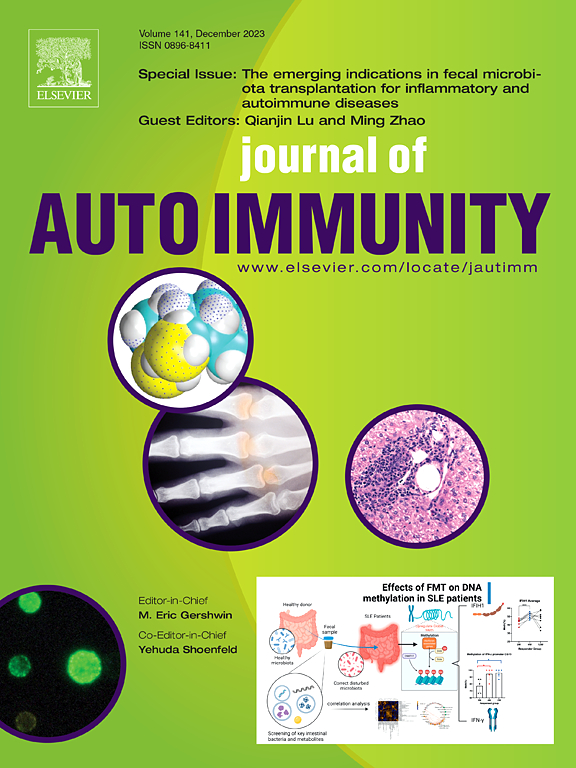Kidney manifestations of sarcoidosis
IF 7
1区 医学
Q1 IMMUNOLOGY
引用次数: 0
Abstract
Renal involvement is a clinically relevant organ manifestation of sarcoidosis, leading to increased morbidity and complications. Although the exact incidence remains unknown, renal disease is likely to occur in up to one third of all sarcoidosis patients. Every patient with newly diagnosed sarcoidosis should receive a renal work-up and screening for disrupted calcium metabolism.
Amid various forms of glomerulonephritis, granulomatous interstitial nephritis is the most common one, but it rarely leads to renal impairment. Histologically, granulomas can be absent. Nephrocalcinosis and nephrolithiasis are frequent forms when hypercalcaemia or hypercalciuria occur. Drugs used for treatment of systemic sarcoidosis can also cause renal damage.
Due to its high heterogeneity, renal sarcoidosis can be difficult to treat. Glucocorticoids and various immunosuppressive treatments have been proven to be effective based on case series, but clinical trials are lacking. A treatment guideline for renal sarcoidosis is urgently needed.
In this review article, we present an overview of the different forms of renal sarcoidosis and the diagnostic steps to confirm renal involvement; in addition, we provide insights on the management and available treatments. A better understanding regarding the pathogenesis of sarcoidosis is the key for the development of more specific, targeted therapies.
肉样瘤病的肾脏表现。
肾脏受累是肉样瘤病的一种临床相关器官表现,会导致发病率和并发症增加。虽然确切的发病率尚不清楚,但多达三分之一的肉样瘤病患者可能会出现肾脏疾病。每位新确诊的肉样瘤病患者都应接受肾脏检查和钙代谢紊乱筛查。在各种形式的肾小球肾炎中,肉芽肿性间质性肾炎是最常见的一种,但它很少导致肾功能损害。在组织学上,肉芽肿可以不存在。当出现高钙血症或高钙尿症时,肾钙化和肾结石是常见的表现形式。用于治疗系统性肉样瘤病的药物也会造成肾损害。由于其高度异质性,肾肉瘤病可能很难治疗。根据病例研究,糖皮质激素和各种免疫抑制治疗被证明是有效的,但缺乏临床试验。肾肉样瘤病的治疗指南亟待制定。在这篇综述文章中,我们概述了不同形式的肾肉样瘤病以及确诊肾脏受累的诊断步骤;此外,我们还提供了有关管理和现有治疗方法的见解。更好地了解肉样瘤病的发病机制是开发更具针对性的靶向疗法的关键。
本文章由计算机程序翻译,如有差异,请以英文原文为准。
求助全文
约1分钟内获得全文
求助全文
来源期刊

Journal of autoimmunity
医学-免疫学
CiteScore
27.90
自引率
1.60%
发文量
117
审稿时长
17 days
期刊介绍:
The Journal of Autoimmunity serves as the primary publication for research on various facets of autoimmunity. These include topics such as the mechanism of self-recognition, regulation of autoimmune responses, experimental autoimmune diseases, diagnostic tests for autoantibodies, as well as the epidemiology, pathophysiology, and treatment of autoimmune diseases. While the journal covers a wide range of subjects, it emphasizes papers exploring the genetic, molecular biology, and cellular aspects of the field.
The Journal of Translational Autoimmunity, on the other hand, is a subsidiary journal of the Journal of Autoimmunity. It focuses specifically on translating scientific discoveries in autoimmunity into clinical applications and practical solutions. By highlighting research that bridges the gap between basic science and clinical practice, the Journal of Translational Autoimmunity aims to advance the understanding and treatment of autoimmune diseases.
 求助内容:
求助内容: 应助结果提醒方式:
应助结果提醒方式:


